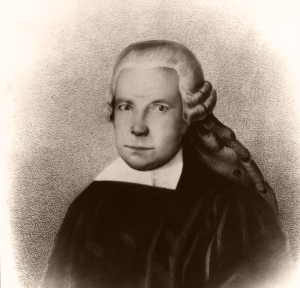
Scopoli was born in Cavalese, Fiemme Valley, in 1723. He studied Medicine in Innsbrusk and practiced the profession in Cavalese, Trento, Idria (Slovenia). At the same time, he produced research in the fields of Botanics, Mineralogy and Entomology.
In 1776 he was offered the chair of Chemistry and Botanics at Pavia University. In those years he founded the Chemistry Cabinet, expanded the collections of the Botanical Gardens and collaborated to the reorganization of materials of the Natural History Museum. Scopoli, however, established a difficult rapport with then museum director Lazzaro Spallanzani; one point of dispute was Scopoli’s predilection for Linneo’s classification method, which Spallanzani did not at all appreciate.
Over time, the two discovered personal and professional differences (culminating with the Physis intestinalis hoax) which proved cause of great bitterness for Scopoli and turned his final years sour. He died in Pavia in 1788.
Among his production, some works are well worth remembering: his Flora Carniolica and Entomologia Carnolica, describing botanical species and insects he studied during his travels and catalogued according to Linneo’s system, the Historico Naturales Annals, several mineralogy, crystallography and mycology publications, the Deliciae florae et faune Insubricae.
